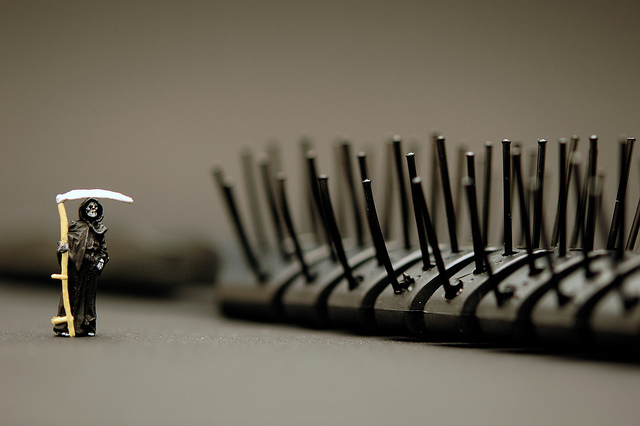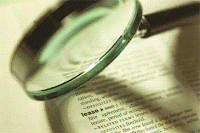
This is a wonderful, must-read, article for anyone who has had trouble proofreading their own work: 10 Proofreading Tips For Self-Publishers.
Anna Lewis writes:
No matter how many times you’ve read through your work, it’s amazing how often errors can sneak through to the final stages. The problem: You’re so familiar with the text that you see what you think you have written rather than what you actually wrote.Yes!!
That happens to me all the time. So, what can we do to catch all those pesky mistakes?
10 Tips For Proofreading Your Prose
1. Put your writing aside for as long as you can stand.
Stephen King says this, Chuck Wendig says this. Everyone I've ever read about writing says this. And, from my experience, it does help a lot. In the case of a book try to put it aside for at least a month, though I think a month and a half is better.
2. Know your weaknesses.
Every writer has weaknesses. Some of us are horrible spellers, some of us repeat phrases or overuse words. Some of us make certain kinds of grammatical errors. If you know what you're likely to do you can make a point of looking especially for that. (And, if you're getting a friend to go over your manuscript, you could mention your weaknesses to them as well.)
3. Read your work out loud.
Anna writes:
If you read aloud, your ear might catch errors that your eyes may have missed. Alternatively, you can use text-to-speech software.Reading one's work aloud is great, a must-do, but I think listening to someone (or something) read the text is useful as well. I do both.
4. Try proofreading backwards.
The first time I heard this advice I thought it was nuts, but the person who gave it to me was a professional and highly sought after proofreader so I tried it. It works! But it is time consuming. Anna suggests using this method for areas such as the cover text.
5. Keep style and usage handbooks readily available and use them!
Excellent advice. I like using digital copies because they're easier to search.
6. Watch out for contractions, apostrophes and homonyms.
7. Run a spell check.
But don't rely on the spell check. You need human eyes on your manuscript as well.
8. Highlight all punctuation marks so you can evaluate each one for accuracy.
9. Proofread a printed version of your work.
I'm like this, I can more easily catch errors in a printed copy than I can by reading from the screen. I'm not sure if this is true for everyone. Perhaps folks who grew up reading from screens won't have this bias.
10. Get someone else to proofread your manuscript.
No matter what you do it'll be harder for you to see what you've actually written as opposed to what you'd intended to write. Trading with writer friends--I'll proofread your manuscript if you proofread mine--can help.
Of course the best solution, and by far the easiest, is to find a good proofreader and pay them to work on your manuscript.
I've paraphrased a good deal of Anna Lewis' article, I'd encourage you to read it in the original: 10 Proofreading Tips For Self-Publishers.
Do you have a tip for catching errors in a manuscript?
Other articles you might like:
- Chuck Wendig's Flash Fiction Challenge: Smashing Sub-Genres- Russell Blake's 26 Tips On How To Sell A Lot Of Books
- Chuck Wendig On Finding Your Voice
Photo credit: "My Brush With Death" by JD Hancock under Creative Commons Attribution 2.0.

